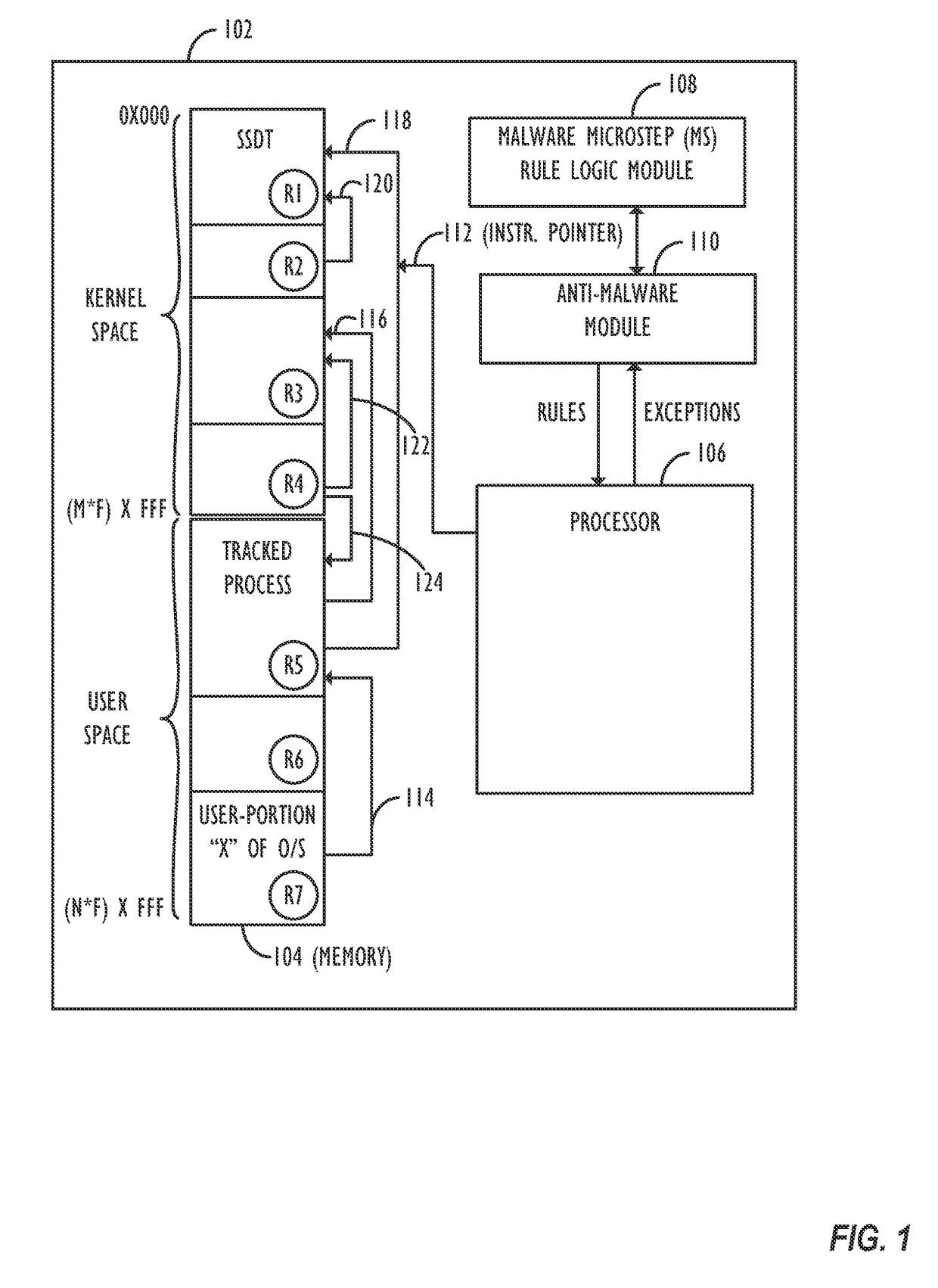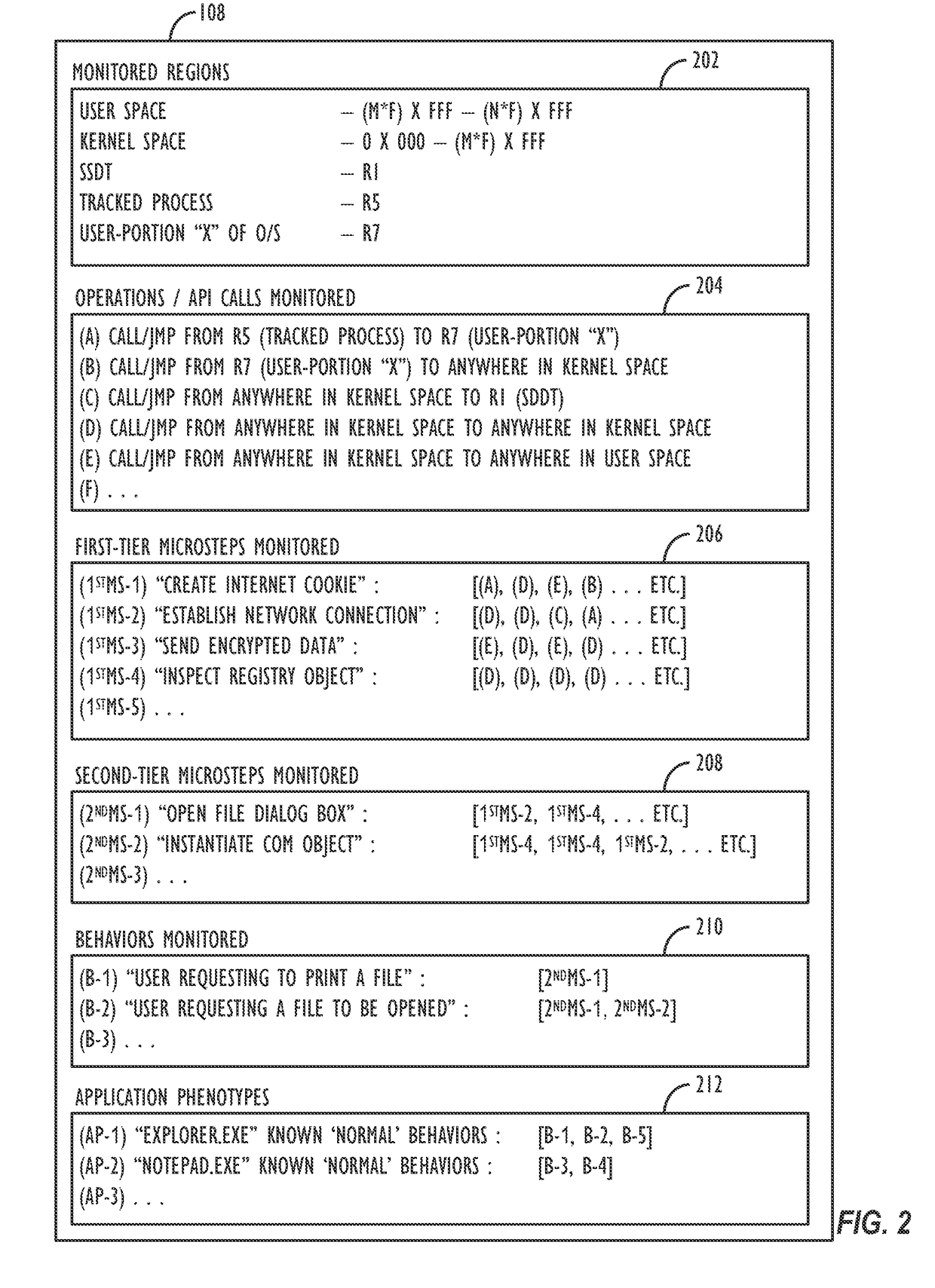Application phenotyping
a technology of application phenotyping and phenotyping, applied in the field of malware detection, can solve the problems of malware and exploits that often evade detection altogether, anti-malware solutions may fail and inability to detect new or morphed malwar
- Summary
- Abstract
- Description
- Claims
- Application Information
AI Technical Summary
Benefits of technology
Problems solved by technology
Method used
Image
Examples
example 2
[0098 includes the subject matter of example 1, wherein the determination whether the first behavior is indicative of malware comprises determining a confidence score based on the comparisons of the first behavior to: the phenotype for the first application, the phenotype for the one or more trusted applications, and the phenotype for the one or more known malware applications.
example 3
[0099 includes the subject matter of example 1, wherein the malware detection system is located on the first device.
example 4
[0100 includes the subject matter of example 1, wherein the malware detection system is communicatively coupled to the first device over a network.
PUM
 Login to View More
Login to View More Abstract
Description
Claims
Application Information
 Login to View More
Login to View More - R&D
- Intellectual Property
- Life Sciences
- Materials
- Tech Scout
- Unparalleled Data Quality
- Higher Quality Content
- 60% Fewer Hallucinations
Browse by: Latest US Patents, China's latest patents, Technical Efficacy Thesaurus, Application Domain, Technology Topic, Popular Technical Reports.
© 2025 PatSnap. All rights reserved.Legal|Privacy policy|Modern Slavery Act Transparency Statement|Sitemap|About US| Contact US: help@patsnap.com



